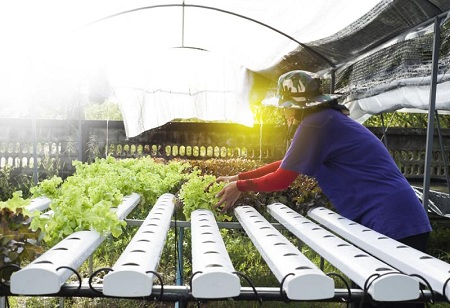Around the world, usable farmland is shrinking at a rapid pace. Owing to population growth, environmental factors such as climate change and natural catastrophes are increasing. As the population rises, lands that were previously nutrition rich are now depleted and turning into urban centers and residential communities.
As if these problems weren't enough, conventional farming is rapidly losing its viability. Younger generations, particularly those reared in rural villages, understand the amount of effort and time that goes into running a successful business and choose to work in other fields. These elder generations are aging out, and leaving a huge space with a vital question of what next?
Thankfully, technology has opened the doors to new methods of growing, and with it, a revitalized interest in cultivation. Today, new forms of cultivation practices like -
Aeroponics farming are actively taking the space as an alternate way of farming in the urban places.
However, this soil free form of farming practice is highly complicated and prone to high maintenance and setup cost. That being said, let's look at some of the key problems in aeroponics development, and understand how the industry is fine-tuning the situation.
Need for constant surveillance
To unleash the success of aeroponics farming, the total ecosystem needs to be meticulously developed. Although the job is easier when using this method of plant growth, it takes more time and care to achieve a satisfactory outcome.
Because there is no growth medium available, the plants must have their pH levels monitored on a regular basis. Moreover, with the inherent sensitivities built into the system, producers must additionally keep track of the nutrient density ratio. Falling to properly optimizing the environment at every point, will lead to devastating after effects.
However, recently intelligent agricultural monitoring systems have evolved as the best tool to monitor plants without any complicated operations and laboratory analysis which require domain expertise and extensive time. “The development of these convenient features has
